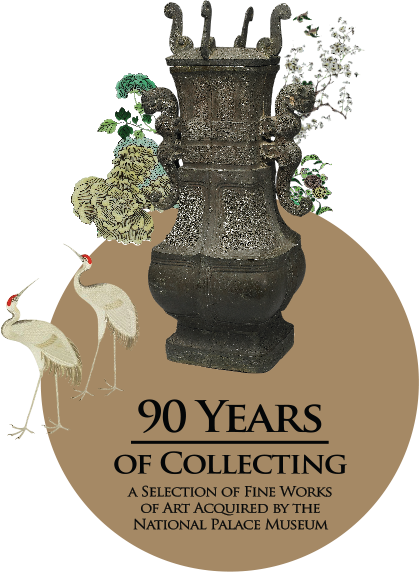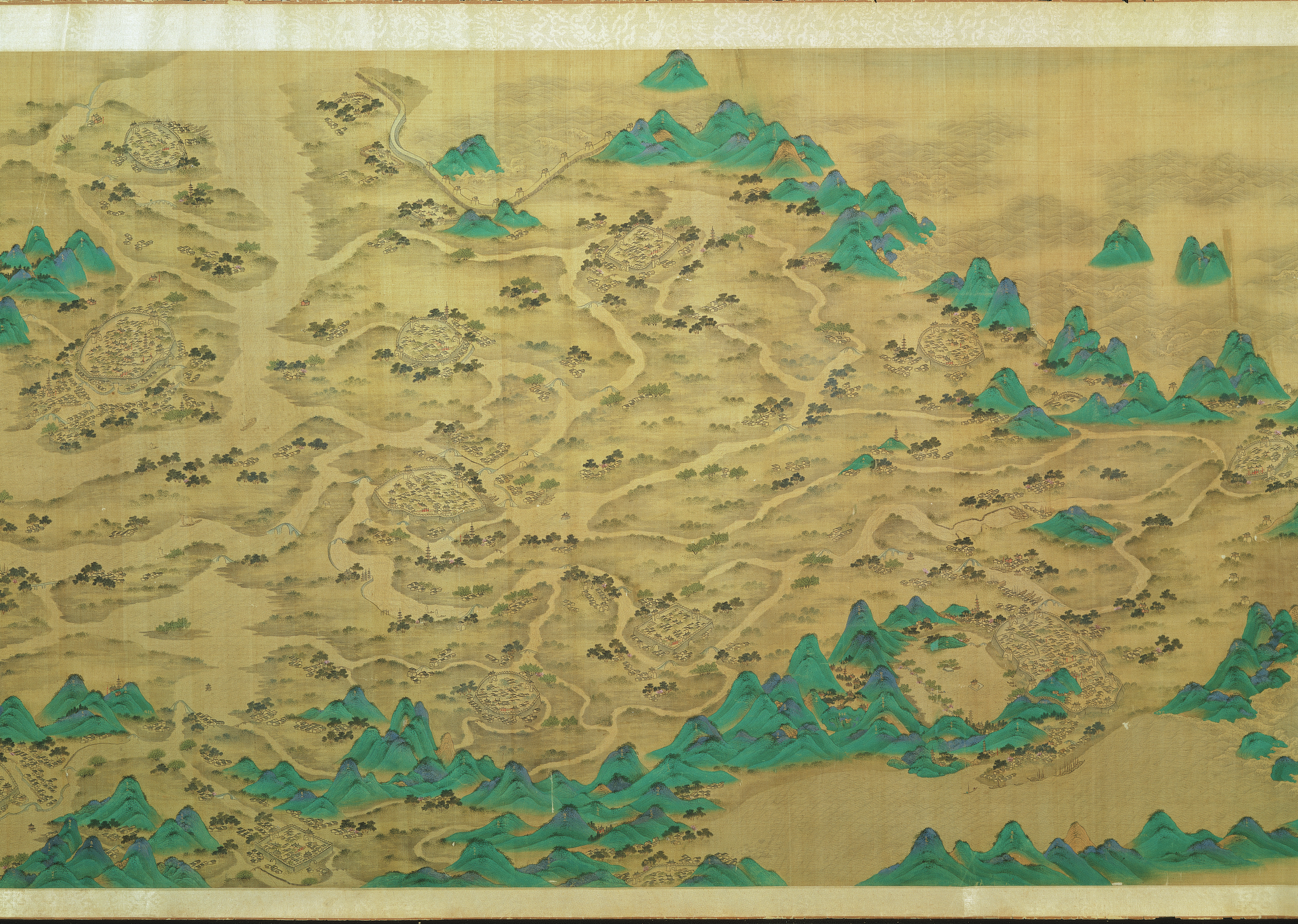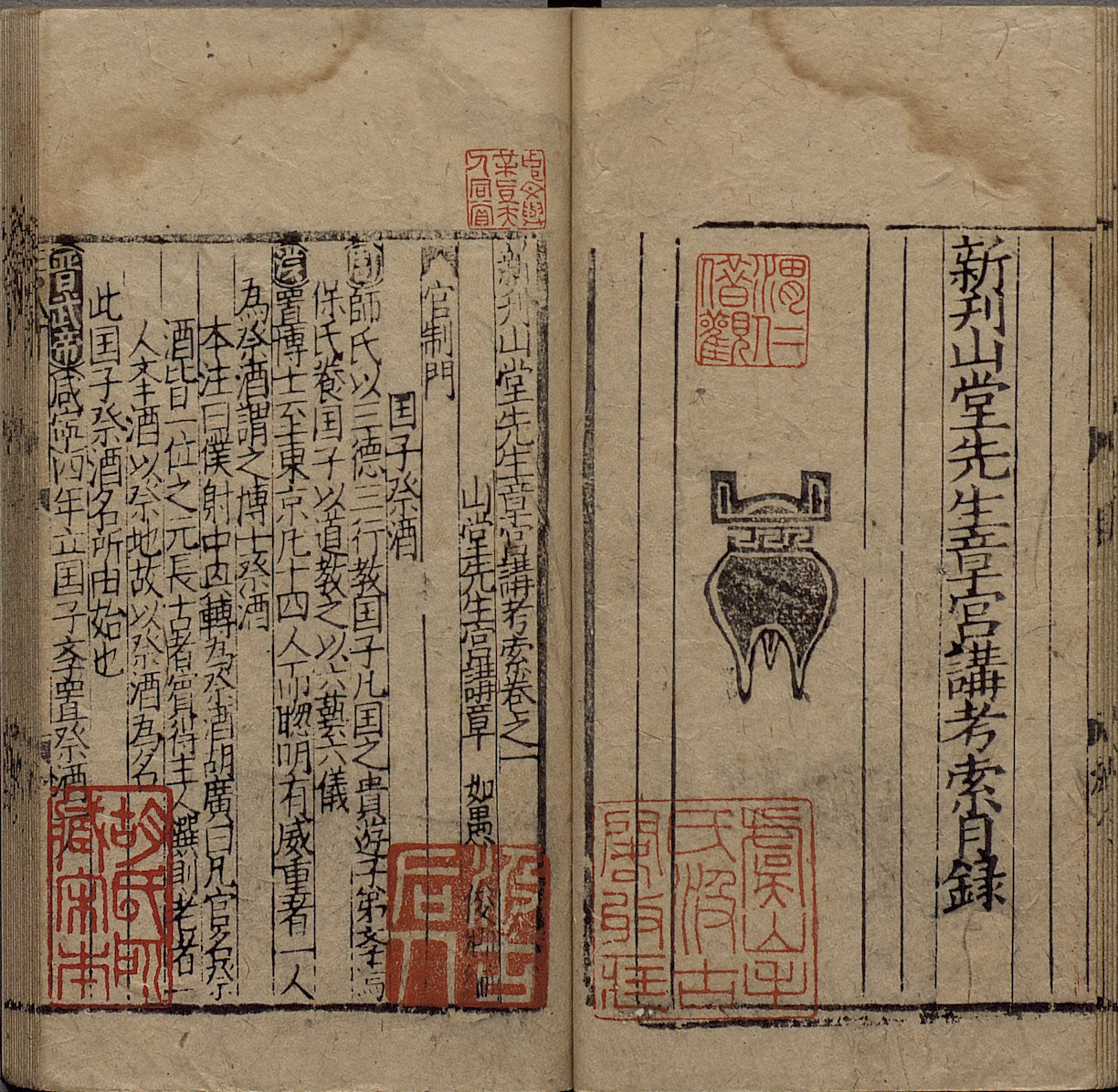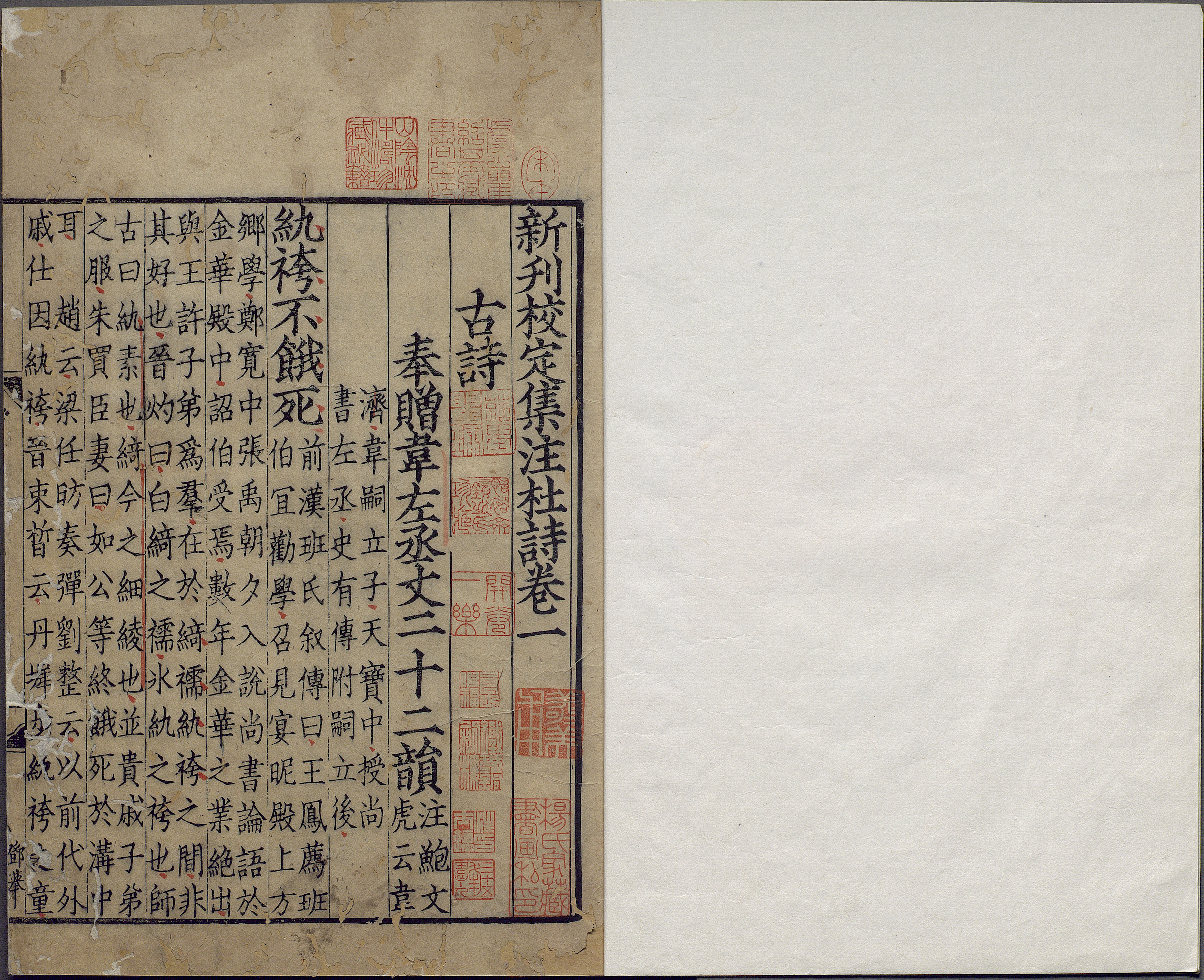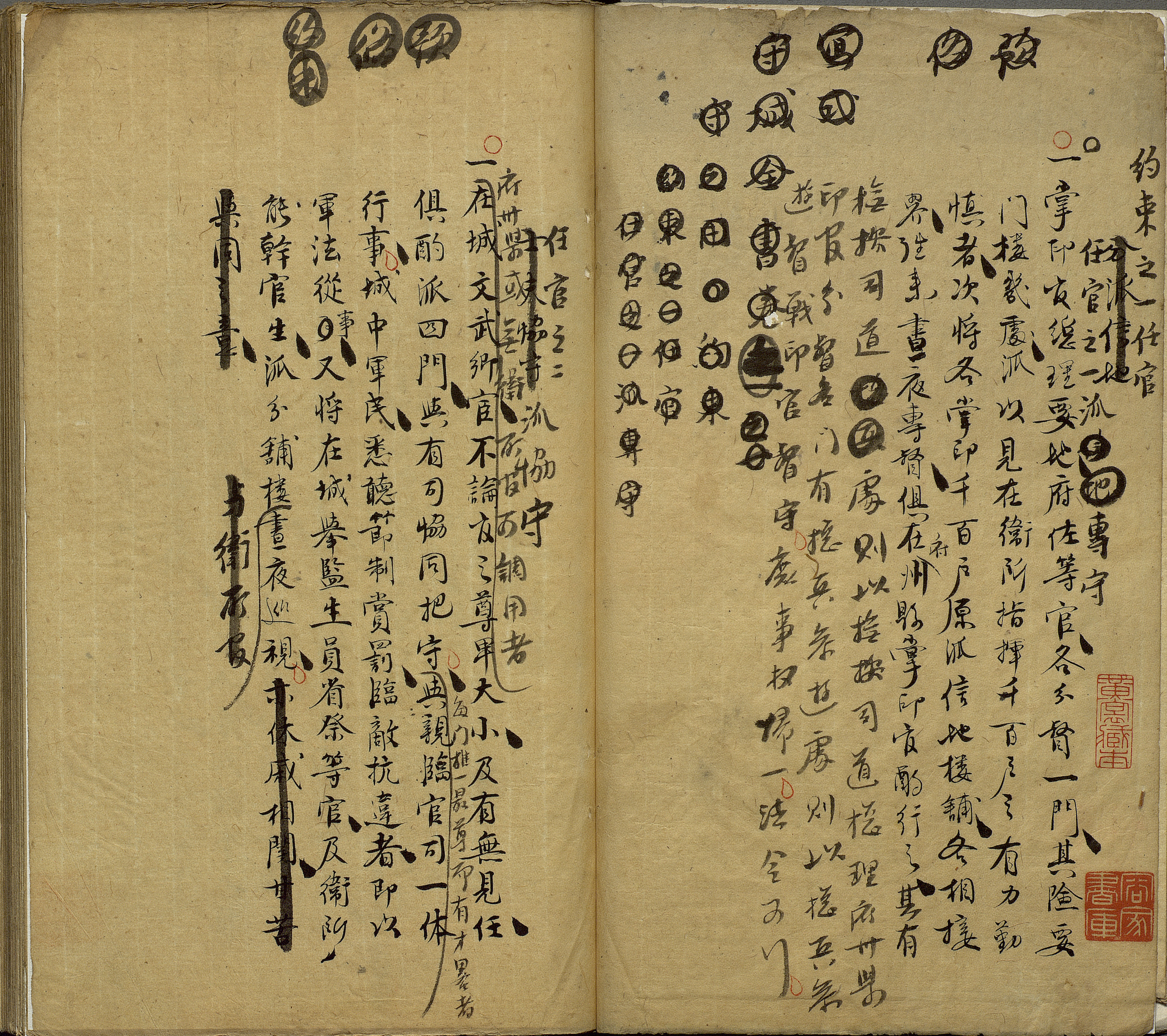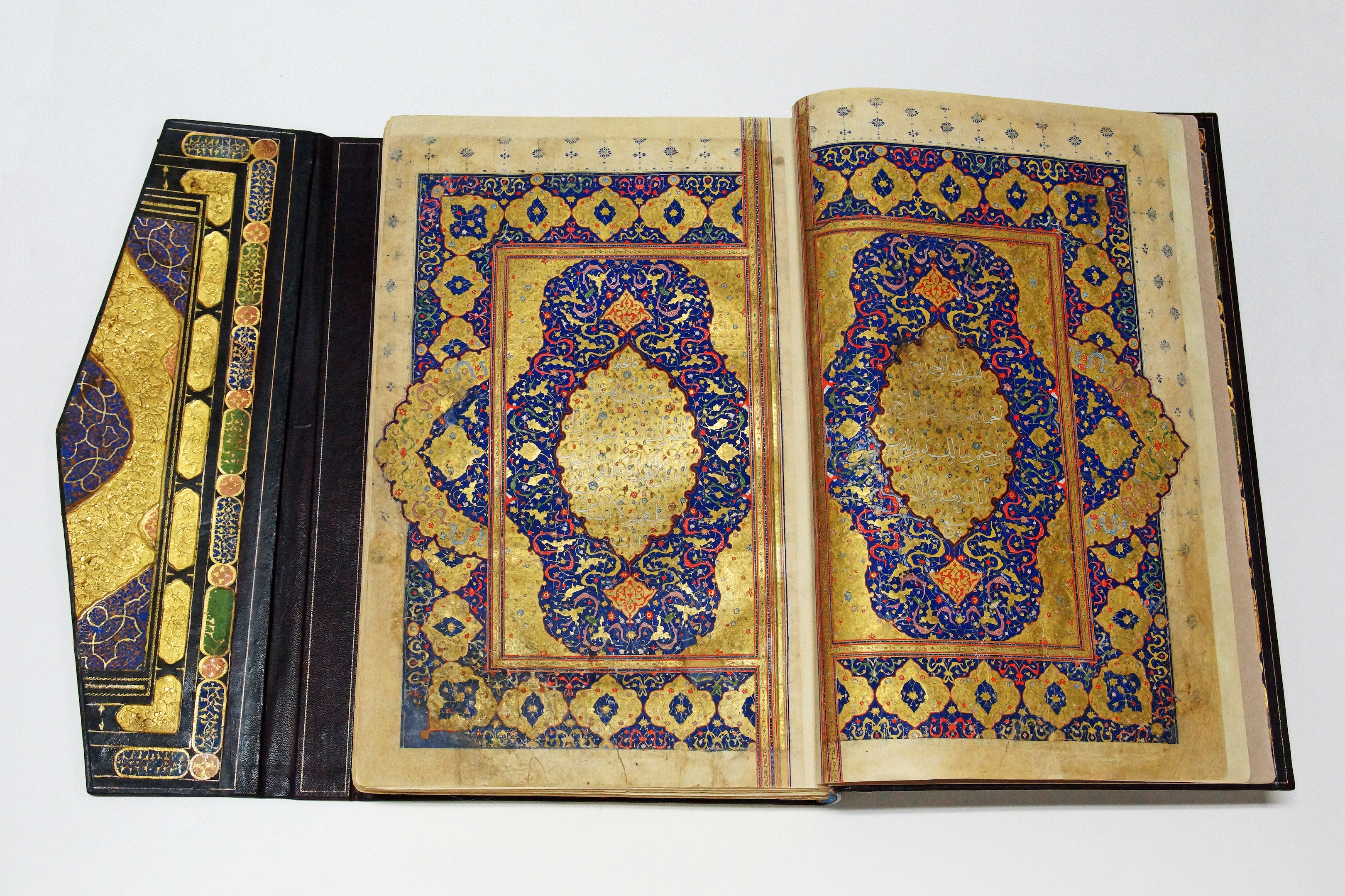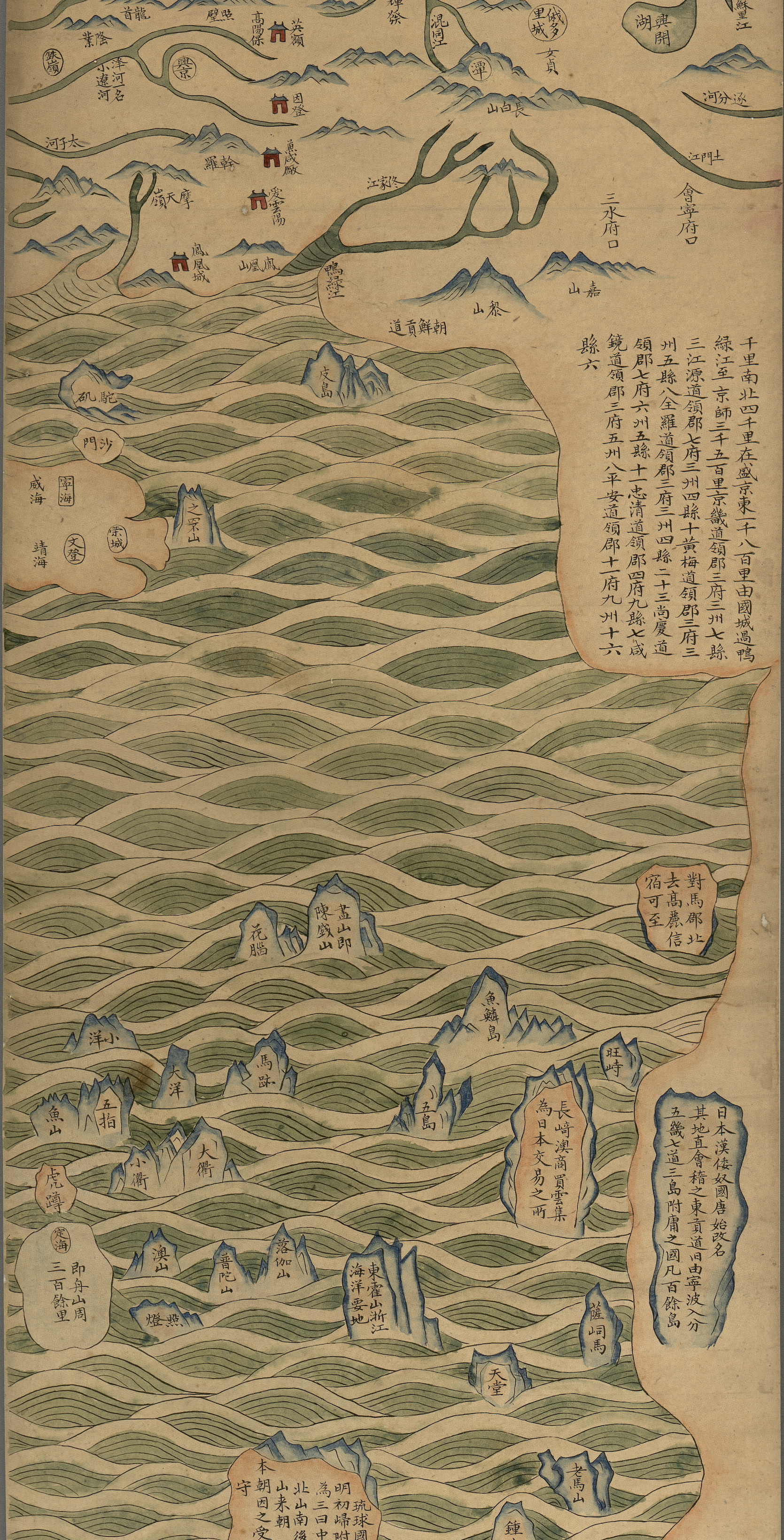The number of rare books and historical documents in the National Palace Museum verges on 600,000. Size-wise it is by far the largest group in the entire collection, making the institution an ideal temple of learning for the studies of bibliology, historical records, cartographic maps, and Buddhist scriptures. While the collection of monographic imprints and archival materials assembled, compiled, and printed by the imperial court of the Qing dynasty, the one the Museum staffers have for the past 90 years uphold their duty in preserving, is extensive and outstanding, it has never curbed the Museum's vision of expanding the scope of the holdings and building up resources for academic research. To date, a total of 60,000 rare books and historical documents have been acquired by the Museum by reassignment, transfer, purchase, and donation, augmenting the original collection to a very large extent. What is even more noteworthy is that these additions also bear witness to the generosity of donors who are willing to contribute what are private to the advancing of the public good and to the safeguarding of cultural heritage for posterity.
This section is made up of five sub-sections, each spotlighting a specific type of new acquisitions in the category of rare books and historical documents. "Lost Treasures from the Heavenly Palace" carries a special meaning as it showcases a number of titles originally in the imperial collection which were once lost but later retrieved. "Outstanding Woodblocks and Exquisite Imprints" introduces a group of fine editions from the Song and Yuan dynasties to the early years of the Republican period, of which many are highly praised and treasured by the book world. "Handwritten Texts by Litterateurs and Wise Men" consists of manuscripts, journals, and letters of correspondence by literary and historical figures, bringing the audiences closer to these men of wisdom and learning who had delved into writing to recount their testimonies and observations of the social currents of their times. "Religious Classics" brings together a selection of Buddhist and Islamic scriptures that bear witness to the power of religions spanning the past and present and traversing the continents of Asia and Europe. "Imperial Atlases and Land Deeds" presents a selection of historical maps drawn in the East and the West, and early Taiwanese land pawning contracts, adding new variations to the Museum's collection of rare books and historical documents.
Lost Treasures from the Heavenly Palace
The decorative installations and collections of cultural relics in the palaces of the Qing imperial court, as well as its cultural accomplishments, attested to the rise and fall of the empire. The various stages of transition – from amassing to dispersing, and from moving to relocating – were brought about by complicated and intertwining factors in history. The Map of the Grand Canal between Beijing and Hangzhou (Jinghang Yunhe Tu), drawn in early Qing, features bright and vivid colors as well as accurate and detailed markings. It was acquired by the Museum years after it had been removed from the imperial palace and taken abroad during the Qing dynasty. Among the many canal maps in the Museum's collection, the work is arguably the most representative piece, excelling in both ornamental and practical values. The compilation of the Complete Library of the Four Treasuries (Siku Quanshu) was an ambitious academic enterprise initiated by Emperor Qianlong. However, the glorious achievement brought about by the tens of thousands of tomes stored in the seven library pavilions in north and south China lasted no more than a few decades; afterwards, more than half of the volumes were destroyed or lost. While the Museum is home to the complete set that was installed at the Wenyuān Pavilion, it has also acquired individual volumes from that of the Wenlan Pavilion. Separate and incomplete as these volumes are, they nonetheless have a reference function to serve. The Tianlu Linlang was yet another library of rare books established by Emperor Qianlong, which, too, underwent waves of loss and destruction. The entire library was destroyed by a fire in the second year of the Jiaqing reign, and the re-built collection then suffered from theft by court attendants in late Qing and the massive smuggling by Puyi. Today, about half of the titles from the library remain in the collection of the Museum. That a number of Tianlu Linlang titles are among the acquisitions made by the Museum over the years is most commendable.
Map of the Grand Canal between Beijing and Hangzhou (Jing-Hang Yunhe Tu)
- Colored painting drawn during the Kangxi and Yongzheng reigns
- Map frame: 78.6 x 2,050 cm; scroll size: 86.4 x 2,700 cm
The Map of the Grand Canal between Beijing and Hangzhou is a color map painted on a long silk scroll, with the east on the top and the west in the bottom. It starts off with Hangzhou Bay and ends with the mountain range along the Badaling section of the Great Wall, which is located to the west of Beijing. The main body of the map follows the path of the Grand Canal which connects Beijing and Hangzhou. It describes in detail the river channels, mountain ranges, spring sources, lakes, dams, and embankments, as well as the cities, towns, famous attractions, and historical sites along the way. The work does not have a title or any description indicating the name of the map's painter or the year when it was created. However, hints such as the addition of ripple patterns on the surface of the sea, the name of the county of Yizheng remaining in its original form of Yizhen, the ongoing construction in the center of the canal, and the presence of the Marco Polo Bridge all help to place the date of its drawing to sometime between the 37th year of the Kangxi reign (1698) and the 1st year of the Yongzheng reign (1723) of the Qing dynasty.
The map was drawn employing the traditional Chinese landscape painting method, truthfully reflecting the actual circumstances of hydraulic canal construction during the Kangxi reign. The entire painting was done beautifully, making it one of the representative works of canal maps of the Qing dynasty.
Outstanding Woodblocks and Exquisite Imprints
Woodblock printing is an important technical invention that drastically transformed the cultural landscape and academic development of historical China. Carved woodblocks for printing, particularly those that underwent meticulous proofreading and boasting delicate writing and engraving craftsmanship, could last for as long as several hundred years given careful maintenance and repair. When integrated with the techniques of paper making, ink mixing, woodblock cutting, printing, and binding, texts carrying the wisdom of our forefathers would exert long and profound impact, like the seeds that bear the legacy of scholastic learning and literary lifeline and that trigger new tides of thought and innovative ideas. This sub-section showcases rare examples of woodblock imprints through the ages, from the sole extant copies of Song editions to the finest works of the Republican period; each of them is rich in resources for bibliographical collation. With precise carving, rigorous printing, and scrupulous selection of fine papers and inks, these titles are all breathtaking and captivating in physical appearance. They are imbued with cultural, aesthetic, and academic values, and illustrative of the unique styles of their times as well. Some of the works boast various collectors' seals, while others include comments and praises written by famous connoisseurs. Not only do these inscriptions offer traces of provenance, they also convey a sense of affection the collectors had for the books, as well as their reminiscence of the remote past. Books embody knowledge, and the associated acts of writing, producing, reading, collecting, and appreciating are to create a boundless universe of material and spiritual substances.
Investigative Guide to the Numerous Books from the Shantang Studio (Xinkan Shantang Xiansheng Zhang Gongjiang Kaosuo)
- Edited by Zhang Ruyu, Song dynasty
- Song pocket-sized imprint
- Print frame: 10.5 x 6.7 cm; book size: 14.1 x 8.9 cm
Edited and written by the Southern Song scholar Zhang Ruyu, the work was made up of 10 divisions (or fields of study) in 100 fascicles in its original form. The version widely available today, though, is one that was revised and recompiled by Luzhong Zengguang of the Song dynasty, which consists of 46 divisions in 212 fascicles. The imprint housed at the Museum addresses only the division on Political System (Guanzhi). It is a pocket-sized work based on the Luzhong revision. Printed by a profit-minded book seller, it was intended to feign the entire work of the Investigative Guide. Encyclopedic in nature, this classified book (leishu) on statecraft and administration draws on the philosophy of many schools of thought, with the author's own perspectives incorporated. It is somewhat different from the reference type of classified books.
Corrected Commentaries on the Poetry of Du Fu (Xinkan Jiaoding Jizhu Dushi)
- Written by Du Fu, Tang dynasty; annotated by Guo Zhida, Song dynasty
- Song imprint of the 1st year of the Baoqing reign (1225) by the Financial and Fiscal Commission of Guangdong
- Print frame: 23.5 x 18.2 cm; book size: 31.4 x 22.2 cm
- Donated by Mr. Shen Zhongtao
The Commentaries on the Poetry of Du Fu (712-770) is a collection of comments, explanations, and annotations addressing the body of works by the Poet-Sage. Like the Collected Commentaries on the Poetry of Du Fu by Nine Masters (Jiujia Jizhu Dushi) registered in the 3rd fascicle of the "Song Imprints of Literary Writings" division in the Catalogue Raisonné of the Tianlu Linlang Library, this title, too, was printed in 1225 by the Financial and Fiscal Commission of Guangdong. Originating from the Tieqin Tongjianlou of the Qu family in Changshou, a private library of the late Qing known for its fine collection of rare books, the work was later acquired by Mr. Shen Zhongtao during the Second Sino-Japanese War. It entered the collection of the Museum in 1981 along with other fine works from his Yenyilou Library. On the occasion of the Museum's 60th anniversary in 1985, the title was reproduced to its original specifications and made widely available.
Handwritten Texts by Litterateurs and Wise Men
The handwritten manuscripts and collations with critical notes by famous individuals and scholars are at times valued more than their well-printed counterparts on account of their originality and scarcity. This section features four such works, each offering a different perspective in terms of historical significance and academic value. The Complete Treatise on City Defense (Shoucheng Quanshu) originally belonged to contemporary writer Huang Shang's Laiyanxie Studio collection. The book was written and compiled by Qi Biaojia, son of the master of Zhanshengtang Hall Qi Chengye, for the purpose of defending his hometown against invaders during a period of widespread unrest across the country, providing insights into the author's contemplation over life and death in a time of dynastic transition. The Interpretive Studies on Explaining Graphs and Analyzing Characters (Shouwen Jiezi Yizheng) is the defining work by the philologist Gui Fu of the Qianlong and Jiaqing reigns, who is often mentioned alongside with his contemporary Duan Yucai. Infusing his lifelong learning into this work, Gui drew upon his vast knowledge to include numerous references, and he even spent the last year of his life editing and collating the book. In Zheng Guofan's journals and letters of correspondence we see that the pillar of the late Qing was constantly laying bare his thoughts and reflecting upon his conduct. These materials bring the readers into closer contact with the historical figure and the stages of major events in his life. The manuscripts of the renowned writer Lin Yutang present an academic paradigm that traverses the past and present while encompassing the traditions of different cultures.
Complete Treatise on City Defense (Shoucheng Quanshu)
- Written by Qi Biaojia, Ming dynasty
- Author's manuscript of the Chongzhen reign (1628-1644), Ming dynasty
- Book size: 29.3 x 18.6 cm
The book is divided into five sections, including "Use of Defense (Shouzhiyong)," "Tools of Defense (Shouzhiju), "Plans of Defense (Shouzhian)," "Drill of Degense (Shouzhixun)," and "Other Issues of Defense (Shouzhiyu)," in which the author paid much attention to many aspects of defense, such as manpower organization, mobilization planning, arms and equipment, and historical cases, as well as related memorials and reports, effective methods, and so on. Considering that in the section on "Other Issues of Defense" Qi had his eye on the discussions among his fellow countrymen about regional army (xiangbing), militia (minbing), community law enforcement force (baojia), and the suppression of thieves and burglars (midao), and that in the first fascicle he made references in the entry on "Pledges (Shiyue)" to the assault on Kaifeng by the rebel leader Li Zicheng (1606-1645), the work was not detached from the current events of its time.
The Complete Treatise on City Defense was first written out by many individuals, and the resulting texts were then edited and revised by Qi Biaojia, which explains the differences in handwriting and ink color. As the manuscript was compiled and collated repeatedly, the paper used was thus different as well, showing marks of cutting and pasting. Many editorial marks and notes are found between the lines, showing the need for further organization and copying, hence the incomplete state. Nevertheless, it is an import work on the author himself and the historical events of the late Ming dynasty.
Religious Classics
The majority of the religious literature acquired by the Museum since its relocation to Taiwan consists of Buddhist scriptures, with texts of Taoism coming in second. There are classics of other religions as well. The scriptures of Buddhism can be further divided into two groups. The first group comprises works written in the Han Chinese script. Notable examples include several Buddhist canons from the Song dynasty donated by Mr. Shen Zhongtao. The two imprints of the Chongningzang Canon from the Song dynasty and the two imprints of the Qishazang Canon from the Yuan dynasty purchased by the Museum are considered rare Buddhist scriptures. The remaining Buddhist canons in the collection are mostly versions from the Ming and Qing dynasties. The second group is the donation of more than 100 Theravāda Buddhist scriptures written in Burmese alphabet on leaves of palm tree donated by Mr. Lu Zhongxiong. The majority of these canons dates to the 18th and 19th centuries, and scriptures rendered in the liturgical Pali script are also found. The texts of Taoism and other folk beliefs in the Museum's collection, on the other hand, are largely from the Ming and Qing dynasties. The two copies of the Qur'an purchased by the Museum are seen as fine examples of Islamic calligraphy. Both originating in the 16th century, one is from the Ottoman Empire (present day Turkey) and the other the Mughal Empire of India.
Monumental Qur'an
- Handwritten edition, ca. 1560, Iran
- 41.5 x 28.5 cm
Sponsored by the Governor of Damascus Hüseyin Pasha (?-1595), the Qur'an presented here was produced by the Safavid Dynasty (1502-1736) for the imperial court of the Ottoman Empire (1299-1923) in a time when the art of the Qur'an was at its peak. The binding style retains its original form dating to the 16th century, with the foldout pages being a noteworthy characteristic of the work. The leather front cover shows ornamental borders and square patterns stamped in gold, and the background is decorated with fine filigree.
The text of the Qur'an was copied by hand using the Arabic Naskh script, with verse markers and diacritical signs in red and black ink decorating the interlinear spaces of the pages. The craftsmanship of illumination displays the stereotypical Safavid Shiraz style, with a pair of gigantic six-petal floral motifs furnishing the front section. Flower-shaped arabesque patterns in brilliant colors fill up the spaces in the frontispiece, title frame, edge decorations of block letters, and verse markings. Parts of the text were written against a golden background covered by twining foliage, demonstrating the close attention paid to details involved in the creation of Islamic Qur'an during this period.
Imperial Atlases and Land Deeds
The fundamental elements in the structure of any sovereign state are its land and population, which also determine the territory to be safeguarded and the principal source of tax revenue. The primary purpose for any government in history in establishing posts in, and assigning officials to, various settlements has been to strengthen control over the country and manage household and land registrations. Such practices as drawing chorographic and national maps and regulating land sales have thus become essential in the implementation of sovereignty. Rather indirectly, these materials provided Western countries with key references in their exploration of the imperial states of the East, from which resulted a myriad of antique maps of Asia in different styles, forming a treasure trove of historical cartographic resources. Featured in this sub-section are a number of pieces that recently entered the Museum's collection, including The Great Qing Dynasty's Complete Map of All under Heaven (Daqing Wannian Yitong Tianxia Quantu) purchased in 2002, the antique maps of Asia donated by the Japanese-German neurosurgeon Prof. Johannes Hajime Iizuka in 2004, and land pawning contracts donated by the Zhan family of Tungshih, Taichung. Not only have they broadened the coverage of the Museum's collection, and introduced new areas of study for its professional staff, but have also enriched the scope of our exhibitions, exposing the audiences to an increasingly diversified presentation of the holdings.
The Great Qing Dynasty's Complete Map of All under Heaven (Daqing Wannian Yitong Tianxia Quantu)
- Colored painting of the 16th year of the Jiaqing reign (1811)
- Map frame: 130 x 31.7 cm; scroll size: 190 x 260 cm
The inscription on the right of the map states that: "During the 32nd year of the Qianlong reign (1767), Huang Qianren (1694-1771) of Yuyao created a map of all under heaven… However, as the map has been engraved and released for a long period of time, it is hereby remade in the panel format." Consisting of eight separate panels, the Complete Map of All under Heaven was redone with supplements based on the original work by Huang Qianren.
The scope of the map covers an expansive region, starting with the Korean Peninsula in the east and extending to the Pamir Mountains in the west, and from the Amur River in the north to the islands of South China Sea in the south. In general, the work depicts many details of the land during the mid-Qing, including its natural geography and China's administrative regions, as well as the locations of fortifications and the Great Wall. It also provides a detailed depiction of the mountains, rivers, islands, and the Yangtze and Yellow Rivers from their sources to their respective estuary. On the map, the source of the Yellow River is placed in the area surrounded by the lakes of Eling, Zhaling, and Xingsuhai, which is very close to its actual location; however, that of the Yangtze River is wrongfully attributed to the Min River, probably due to the adoption of incorrect assertions.
